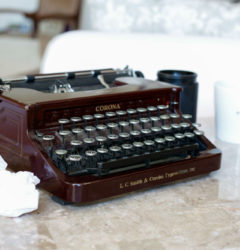25 Mar

For many nonprofits, knowing how to write a grant can make all the difference in getting funding for a worthy cause. Indeed, convincing an institution to provide resources for a project can be a daunting task. However, knowing the ins and outs of grant writing can up your chances of getting approved.
In this grant writing for dummies article, we’ll discuss the basics of creating grant proposals, specifically those that seek to get funding for nonprofit causes. We’ll also review templates and tips to equip you in writing a document that will get potential donors on board.
Grant Writing for Beginners
Before you delve into the writing process, let’s discuss the definition of grant proposals. In a nutshell, a grant proposal is a document that seeks funding for education, research, small business, or nonprofit groups.
The financing source can be a foundation or a private entity. For nonprofit groups, the common goal for requesting a grant is to advance a cause it supports. Akin to preparing an elevator pitch, preparing a grant proposal entails packing relevant information into a document. It also involves using powerful words to convince a person or a group to become donors.
How to Write a Grant: Processes and Approaches

Just like pitching for an article, grant writing requires you to lay down clear goals from the get-go. What do you need the funding for? What social impact are you trying to create?
For example, if you’re trying to hold a livelihood workshop for a certain area, specify the elements to create a clear picture of the project. Who is the target audience of the workshop? What skills will they acquire for the training, and how can they apply it to generate income?
Furthermore, it’s essential to know the foundation you’re asking for funding from. Just as writing a good speech requires knowing who your audience will be, knowing the potential donors increases the chance of connecting with them and getting them on board.
Last but not least, you must highlight the significance of the project to the community. Highlight how the project to be funded will make a difference. In the same vein, you must provide goals that you can measure.
Grant Writing Template
Though there isn’t a cookie-cutter template for grants, below are the typical parts of a proposal you should familiarize yourself with.
Cover Letter
This part gives you a chance to introduce your group and give a brief info about the proposal. It’s typically best to write this part last after you’re done creating the whole plan.
Executive Summary
An executive brief is a compact outline of your proposal. This abstract allows the grantor to have a general idea about your proposal before reading the whole document. One of the things that need to be clear in this part is the range of benefits the project can bring to the table. This part should make a good impression without being too wordy.
Statement of Needs/Objectives
A statement of needs lets the grantor know why you need to launch the project in the first place. Identify the problems that need to be addressed as clearly as possible. In the same vein, state the void that your project wishes to fill. Objectives, on the other hand, provide a clear list of measurable goals. These goals should be parallel to the issues that need to be solved.
Project Activity and Methods
This part describes the activity being proposed, as well as the planned methods and approaches to achieve the identified goals. This is typically the longest and meatiest part of the proposal. It contains the unique approach you thought of to address the needs and achieve the goals identified earlier.
Evaluation Plan
The evaluation plan provides a quantifiable gaging of how a project was able to achieve its goals and solve the problems stated earlier. How will you produce the figures you need to measure the results of your project? How will you assess how well the project achieved the objectives? Clarify these matters in this part of your paper.
Budget Breakdown
The budget breakdown reflects the resources you’re requesting from the grantor to undertake the proposed activity. It’s essential to be as clear as possible, as vagueness in money matters can make a proposal seem shady.
Take note that proposal parts are not limited to the items above. Sections may vary depending on the nature of the proposed project as well as the groups involved. For example, if the nonprofit group sending the proposal is relatively new, it’s reasonable to include a short background about the group and what it does.
Grant Writing Tips

If you want to master how to write a grant that persuades, try these foolproof tips:
Tell a Compelling Story
Just like in website copywriting and marketing writing, grant proposals require effective storytelling. Not only should it describe the importance of the project, but it should also explain why the donor needs to take part in the project.
Research
Back up your proposal with actual data relevant to the social issue at hand. The project must be grounded on quantifiable metrics instead of vague ideas. Refer to previous studies or conduct your own study or survey if possible.
Proofread
Before sending your grant proposal, make sure that everything is in apple-pie order and is free from typos or grammatical errors. A hastily prepared proposal can make your nonprofit look amateur and incapable of handling a project with big funding.
Multiple Grant Writing for Nonprofits
For most nonprofits, applying for a single grant isn’t enough to fund various projects that move a cause or advocacy forward. Aside from that, some nonprofits also apply for multi-year funding from donors. This arrangement allows them to sustain the activity year after year and produce lasting results.
Whatever the cause may be, be sure you know how to write a grant that is concise, compelling, and convincing. Most of all, it should reflect the spirit behind the advocacy you’re advancing to have a positive impact on society.
Leave a Comment
You must be logged in to post a comment.










